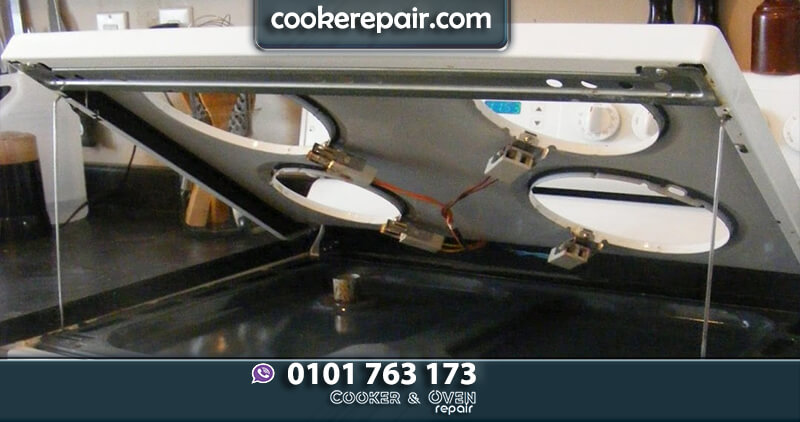Cooker Trips Circuit Breaker: Cooker Fix Explained
When you attempt to use your cooker, and the circuit breaker trips, it can be frustrating and potentially dangerous. This issue is relatively common, but it’s important to understand what causes it and how it can be fixed. In this article, we’ll explore why your cooker trips the circuit breaker, the potential causes, and how to fix the problem safely and effectively.
What is a Circuit Breaker and Why Does it Trip?
A circuit breaker is a safety device designed to protect electrical circuits from overloads and short circuits. When too much current flows through the circuit, the breaker trips to prevent overheating or potential fire hazards. If your cooker trips the circuit breaker, it’s a signal that something is wrong within the appliance or its electrical connections.
Common Reasons Why a Cooker Trips the Circuit Breaker
There are several reasons why your cooker might be tripping the circuit breaker. Identifying the cause is essential for fixing the issue. Here are some common culprits:
1. Overloaded Circuit
Cookers require a significant amount of power to operate, and if multiple high-power appliances are connected to the same circuit, it can overload the system. When the circuit is overloaded, the breaker trips to prevent damage.
2. Short Circuit in the Cooker
A short circuit occurs when a live wire comes into contact with a neutral wire, creating a path with little resistance. This can cause the cooker to pull more current than normal, triggering the circuit breaker to trip.
3. Faulty Cooker Components
Sometimes, a faulty component within the cooker, such as a damaged heating element, could be causing an excessive flow of current, tripping the breaker. Other components like thermostats or wiring issues can also contribute to this problem.
4. Wet or Damaged Wiring
Water and electricity do not mix. If your cooker has been exposed to moisture or its wiring is damaged, it can cause a short circuit or ground fault, causing the breaker to trip.
5. Ground Fault
A ground fault happens when a live wire touches a grounded part of the cooker. This creates a direct path for the current to flow, triggering the breaker to trip for safety.
How to Fix a Cooker That Trips the Circuit Breaker
Fixing a cooker that trips the circuit breaker requires a methodical approach. While some repairs can be done by the user, others may require a professional technician. Here’s a step-by-step guide to troubleshooting and fixing the problem:
Step 1: Reset the Circuit Breaker
Before investigating the issue further, try resetting the circuit breaker. Simply flip the breaker switch to the “off” position and then back to the “on” position. If the cooker still trips the breaker after resetting, it’s time to investigate further.
Step 2: Unplug Other Appliances
To rule out an overloaded circuit, unplug any other appliances that are connected to the same circuit. Cookers typically have a dedicated circuit, but if other appliances are sharing the same line, they could be causing the overload. If the breaker stays on after you unplug the other appliances, the issue was likely an overload.
Step 3: Inspect the Cooker’s Wiring
Check for visible signs of damage or wear on the cooker’s wiring. If you find any frayed wires or exposed parts, this could be the cause of the short circuit or ground fault. If you’re comfortable with electrical work, you can replace or repair damaged wiring yourself. Otherwise, call a licensed electrician to handle the repairs.
Step 4: Test for Short Circuits or Ground Faults
If you suspect a short circuit or ground fault, use a multimeter to check the continuity between the live, neutral, and ground connections. If there’s continuity between the live wire and the ground or neutral wire, you have a short circuit. Similarly, if the multimeter detects a path between the live wire and ground, a ground fault is present. If you find any faults, repair the affected parts.
Step 5: Inspect Cooker Elements
One of the most common causes of a breaker tripping is a faulty heating element. Inspect the elements carefully for any visible signs of damage. If you suspect a faulty element, replace it with a new one. If you’re unsure, you can test the elements using a multimeter to check for continuity.
Step 6: Call a Professional Technician
If none of the above steps resolve the issue or you feel uncomfortable working with electricity, it’s best to call in a professional technician. They can inspect the cooker thoroughly, identify the issue, and make the necessary repairs.
Preventive Measures to Avoid Cooker Trips
To prevent future issues with your cooker tripping the circuit breaker, consider the following tips:
1. Avoid Overloading Circuits
Ensure that the cooker is plugged into its own dedicated circuit. Avoid using other high-power appliances on the same line to reduce the risk of overloading.
2. Perform Regular Maintenance
Regularly inspect your cooker for any signs of wear or damage, such as frayed wires or cracked elements. Keep the appliance clean and maintain it according to the manufacturer’s guidelines.
3. Hire a Professional for Repairs
Whenever possible, hire a professional electrician or technician to perform repairs, especially if the issue involves complex electrical components or safety concerns.
4. Install Surge Protectors
Surge protectors can help prevent electrical surges from damaging your cooker and tripping the breaker.
Fixing a Cooker That Trips the Circuit Breaker
If your cooker trips the circuit breaker, it’s a sign that something is amiss. Whether it’s an overloaded circuit, a faulty component, or a short circuit, understanding the cause is the first step toward fixing the problem. Always prioritize safety when dealing with electrical issues, and if in doubt, call a professional technician to handle the repairs.
By following the steps outlined in this article, you can resolve the issue and get your cooker back to working condition. With proper maintenance and care, your cooker will serve you well for many years to come

